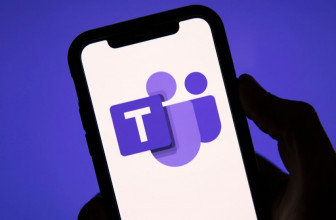
OUR VERDICT
Lenovo has produced another gorgeous 2-in-1 laptop that can transform into a tablet-like device. It’s a premium product with a price tag to match, but you feel like you’re getting your money’s worth with this accomplished device.
FOR
- Lovely design
- Thin
- Decent power
- Great sound quality
AGAINST
- Lacks graphical power
- Keyboard still annoys in tablet form
- Fans can be loud when they kick in
- Plastic stylus-holder feels cheap
In a year when we’ve seen a wide range of fantastic 2-in-1 laptops, Lenovo has possibly saved the best for last with the Yoga 920, its follow-up to the sublime Yoga 910.
The Lenovo Yoga 920 manages to retain the hallmark 360-degree hinge while still featuring USB-C ports, an improved webcam location, a better keyboard and longer battery life.
Still, we’d be remiss if we didn’t mention that 2017 was a great year for convertible laptops, with devices such as the beloved Microsoft Surface Book 2 really pushing the boundaries of what we can expect from the best 2-in-1 laptops.
That means the Yoga 920 had its work cut out if it was going to stand above the rest of the crowd. Did it succeed? Read on to find out.
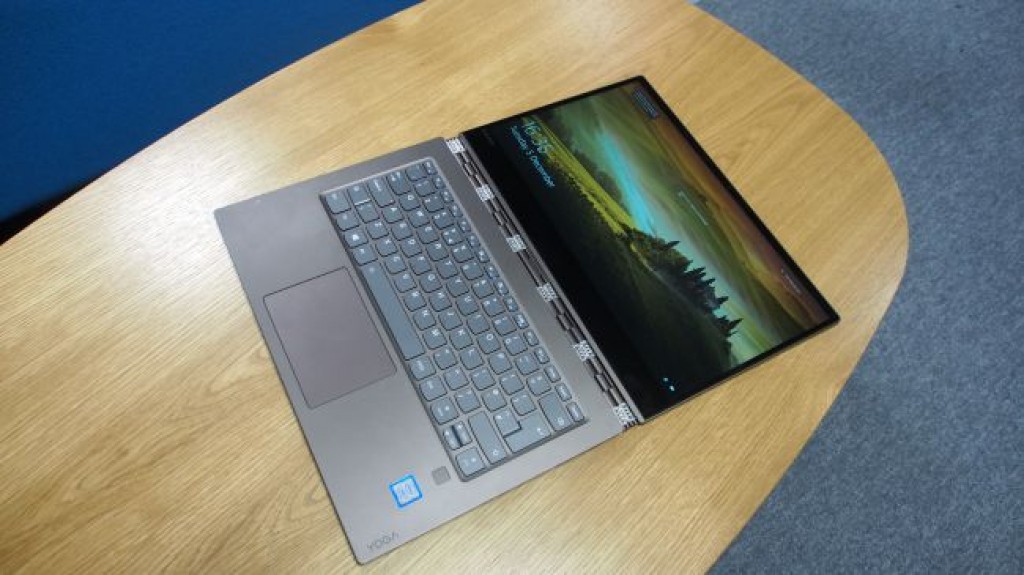
Price and availability
As with other 2-in-1 devices, the Lenovo Yoga 920 comes in different configurations, though thankfully Lenovo hasn’t gone overboard by offering a confusing array of options.
The base model comes with an Intel Core i5-8250U processor, 256GB SSD, 8GB RAM, a 13.9-inch 1080p touchscreen and an Active Pen stylus, and costs $1,199.99 / £1,199.99. This model is available in the US and UK.
A second model comes with the same spec as above, but features a faster Intel Core i7-855OU processor and larger 512GB SDD. This costs $1,549.99 / £1,349.99 and again is available in the UK and the US. From these prices you can see that in the UK, the higher-specced Yoga 920 offers much better value for money.
Finally, there’s a version that features an Intel Core i7-855OU processor, 16GB RAM, up to 1TB of storage and a UHD (3840 x 2160) screen. This model is only available in the US and Australia, and costs $1,999.99 / AU$1,999.
Australian readers may be a bit miffed about missing out on the lower-specced versions, but at least the price conversion compared to US$ works out very well. Meanwhile, if you’re in the UK you won’t have the option of that 4K screen.
While these are quite hefty sums to be parting with, they are around the price we normally see high-end and premium laptops and ultrabooks sell for, and they’re still a fair bit cheaper than the Surface Book 2 (13.5-inch), the smaller version of Microsoft’s 2-in-1, which is comparable to the Yoga 910 in terms of size and power.
Prices for that device start at $1,499 (£1,499, around AU$2,600) for which you get a 7th-generation Intel Core i5 CPU, 8GB RAM, 256GB and an integrated GPU. The prices then rise to a pretty steep $2,999 (£2,999, around AU$5,200) for the top-of-the-range model, which comes with an 8th-gen Intel Core i7 CPU, 16GB RAM, 1TB SSD and a GTX 1050 graphics card.
That’s quite a difference in price, though it is worth noting that none of the Lenovo 920 configurations come with a dedicated graphics card. Instead they come with less powerful integrated cards which can handle most tasks absolutely fine, but will suffer when it comes to gaming and video-editing.
Overall, though, we feel the prices are pretty good for the various Yoga 920 configurations, and while they’re certainly not cheap, these aren’t ludicrous asking prices for the quality of device you’re getting.
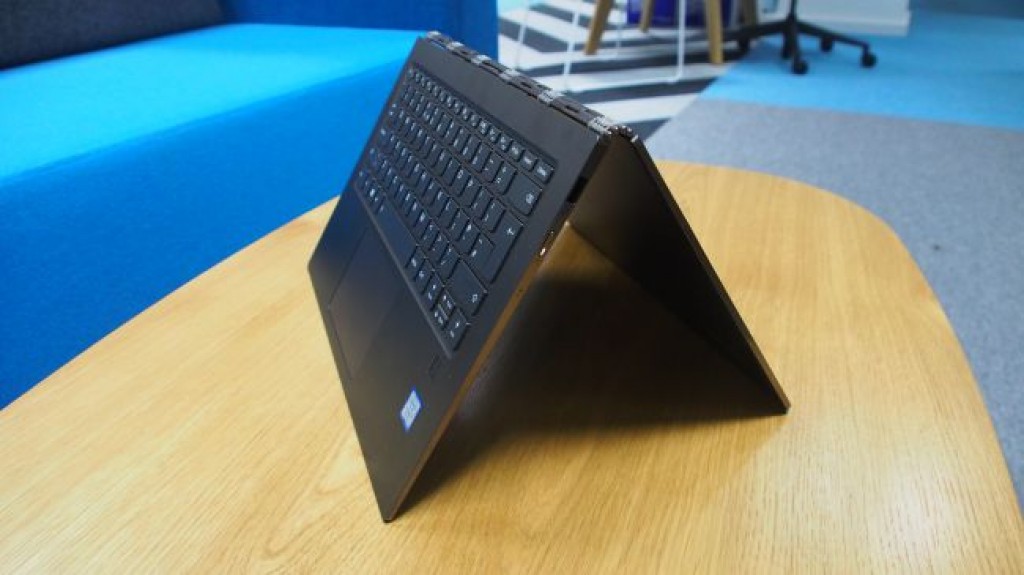
Design
When you’re paying a premium price you want a device that looks – and feels – premium as well, and Lenovo has done an excellent job of that with the Yoga 920. It has a thin yet sturdy feel to it, weighing 3.0 pounds (1.37kg) and measuring just 12.7 x 8.8 x 0.5 inches (323 x 223.5 x 13.95mm).
This means it has a nice heft, without feeling heavy or bulky. It also has a metallic finish which adds to the premium feel, although after only a few hours of use the metal became a veritable haven for fingerprints, so you may want to keep a small cloth handy to keep it smudge-free.
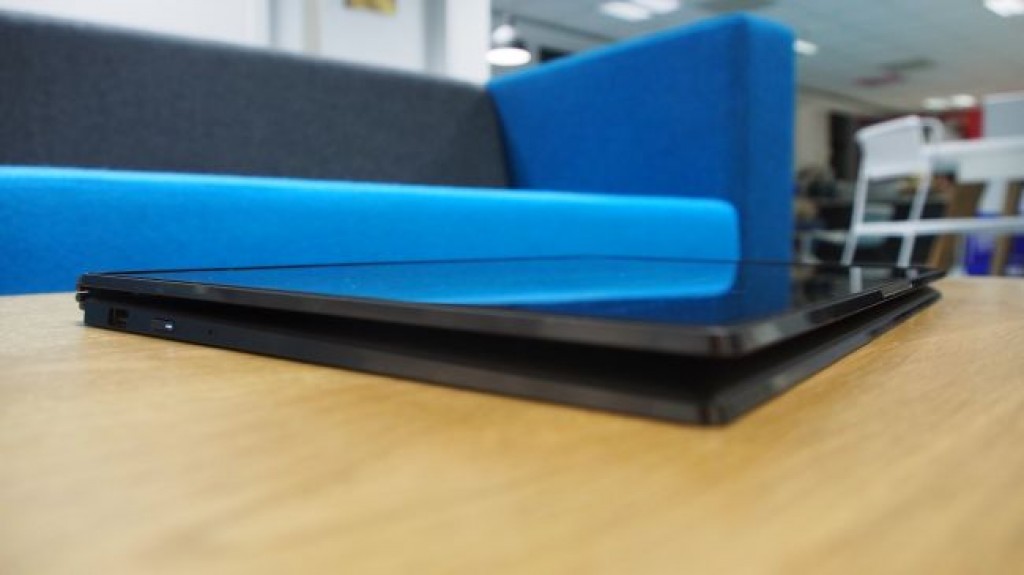
It’s a small price to pay, however, for such a good-looking 2-in-1. The hinges along the back of the Yoga 920 are also eye-catching – we’ve fluctuated between thinking they’re stylish and finding them a bit gaudy. There’s no doubting the strength and build quality of the hinge though, which is essential for a convertible laptop as that hinge is likely to see a lot of action as you flip the screen orientation, so you don’t want it to be a point of failure.

Like the hinge on the Surface Book 2, it’s strong enough to angle the screen without the body tipping up, while the screen remains held in place. Unlike the Surface Book 2, however, the design of this hinge doesn’t stick out quite as much, and, of course, it can flip the screen a full 180 degrees.
2-in-1 convertibles that flip their screens to turn into a tablet-like device struggle to provide quite as good a tablet experience as 2-in-1s on which the screen detaches from the keyboard, as you’re still left with a slightly bulky device with a back that feels like a keyboard (because it is one).
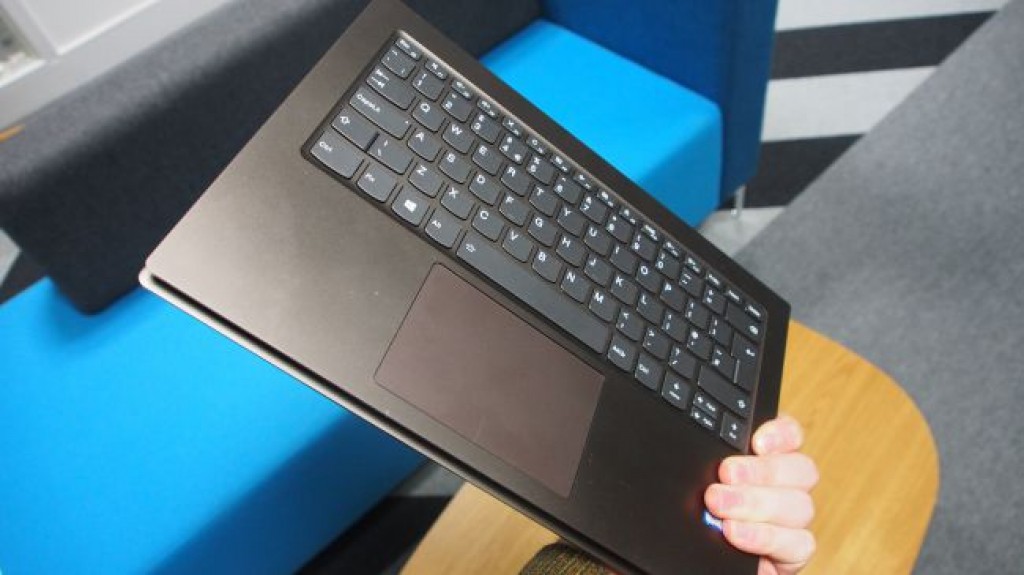
Lenovo has managed to address at least one of these points thanks to the thinness of the design – even with the screen flipped all the way back this is still a thin device, though not quite as slim as standard tablets. That keyboard back remains, and while it doesn’t feel that nice (compared to the smooth, flat back of a normal tablet), it’s at least clever enough to turn off the buttons, so they don’t interfere when in tablet mode.
Because of this we’d recommend the Yoga 920 as a laptop that can occasionally turn into a tablet, rather than vice versa. If you’re looking for something that you’ll use mostly as a tablet, but want it to also turn into a laptop-like device for typing on, we’d recommend something like the Surface Book 2, or perhaps a tablet that comes with a physical Bluetooth keyboard.
The bezel around the screen is impressively thin, and the webcam is now back at the top of the screen, in a central location. On the Yoga 910 the webcam was housed in the bottom bezel, which led to some unflattering shots, and in general people weren’t too happy with that placement. With the camera returning to the top of the screen videos look much more natural when using VoIP software – and thankfully, putting the webcam back there hasn’t required making the top bezel any larger.
Given the thinness of the design, it’s probably no surprise that ports-wise there aren’t a huge number of connectivity options. On the left-hand side there’s a headphone/mic jack and two USB-C ports (one of which is also used as the power supply), and on the right is a full-size USB 3.0 port. This isn’t the most generous offering, but it’s more than the MacBook’s single USB-C port.
To be honest, we didn’t find the number of ports restrictive, and it’s a reasonable trade-off for the svelte design. If you have a number of USB devices that you want to attach you’ll need an adapter, though the Yoga 920 also has built-in Bluetooth support.
The fact that it still features one full-size USB port means there’s some flexibility here for using legacy devices, as well as memory sticks.
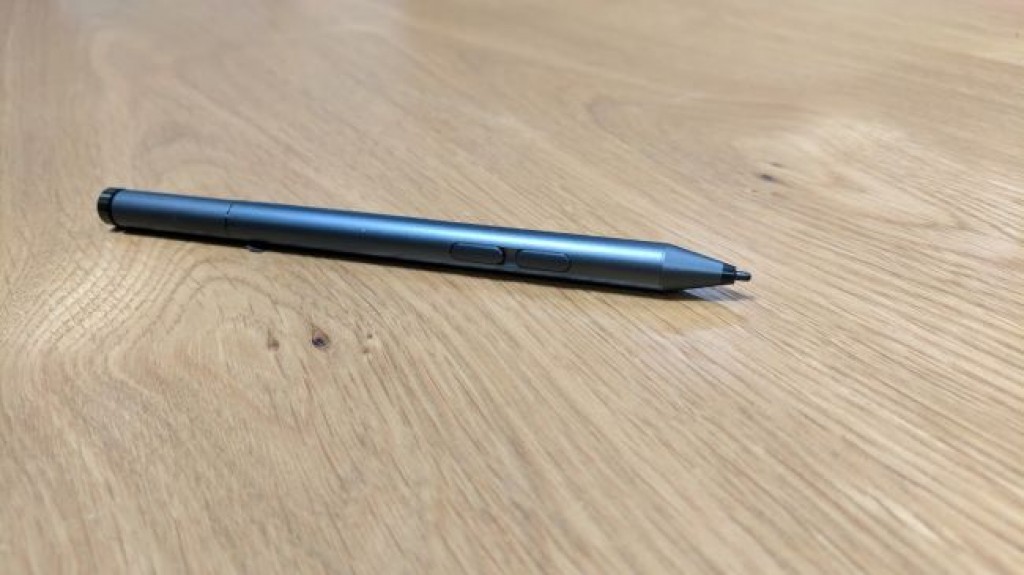
Stylus pros and cons
One thing we complained about with the Surface Book 2 devices was that despite their high prices the Surface Pen stylus wasn’t included, necessitating an extra outlay on top of an already expensive purchase.
Thankfully Lenovo hasn’t followed suit, and has included its Active Pen stylus as part of the package. This battery-powered stylus has a nice design, and the Yoga 920 responds well to it thanks to its screen being able to detect 4,096 levels of pressure. Light presses and hard presses were registered accurately in the art apps we tried, and the 920 kept up with even the most frantic scribbles.
Unlike the Surface Pen, which has a nifty feature where you can use the other end of the stylus as an eraser, you need to hold down one (of two) buttons on the stylus to engage erase mode. Overall, though, we were pleased with the Active Pen, and we’re very pleased that Lenovo saw fit to include it with the Yoga 920 as standard.
However, it’s not all good news. Lenovo had to find a way to easily store the stylus within such a slim design. Microsoft’s solution with the Surface Pen and its Surface devices is to magnetically attach the stylus to the body of the main device; it’s a nice feature that’s handy, though not completely secure, and it helps to give those devices a premium feel.
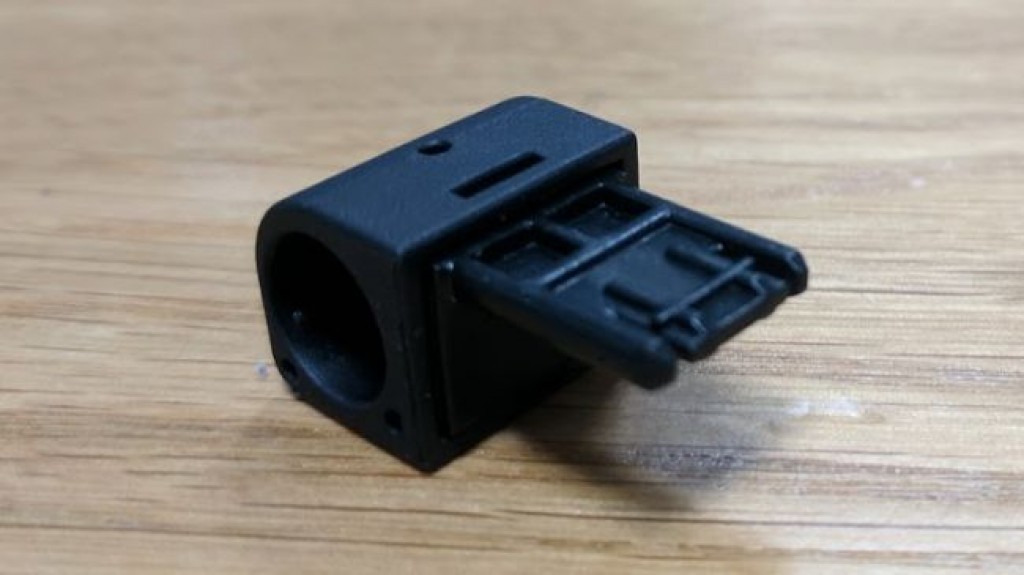
However, for the Yoga 920 Lenovo has decided on a plastic holder that slots into the full-size USB port and holds the stylus there. This ends up feeling a bit cheap and tacky, and it also means you’re losing access to a USB port while you’re using it. It’s a shame, as so many other elements of the Yoga 920’s design feel premium, and this just feels like a fudge.
During our time using the Yoga 920 – primarily as a laptop, but also occasionally as a tablet – we were very impressed with its performance. The unit we used was the version with a Core i7 processor, 8GB of RAM and a 1080p display.
Windows 10 ran smoothly with no issues, and thankfully Lenovo has kept bloatware (as in unwanted pre-installed applications) to a minimum. Day-to-day tasks were usually processed quickly, although we did notice that it took our configuration of the Yoga 920 quite a long time to extract a large compressed .zip file, which also caused its fans to kick in.
Most of the time these fans stayed silent, but for more demanding tasks they did kick in, making the 920 louder than the fanless design of the Surface Book 2 13.5-inch.

We used the Yoga 920 for a lot of web browsing, with multiple tabs open, and it performed well. The keyboard was large enough to type comfortably on, and despite the keys being fairly shallow they had satisfying travel.
The touchscreen was fast and responsive, when using either fingers or the stylus, and even though we tested the 1080p version, rather than the UHD version, the screen still looked fantastic, with crisp and bright visuals. In fact, we’d say a 4K screen on a 13-inch screen like this is overkill, especially given the size of the screen.
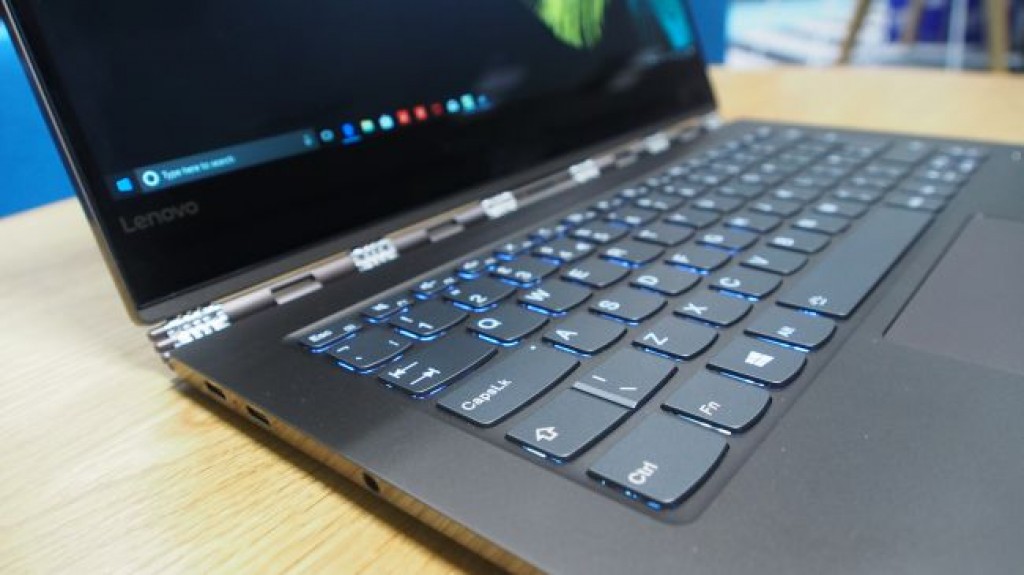
Image quality was also fantastic on the screen, with bright and vivid pictures and deep blacks offering an enjoyable viewing experience when watching movies. The sound quality, powered by Dolby Audio Premium, is also very impressive. Despite its small size, the Yoga 920 does a great job of pumping out sounds at a decent volume – and the audio quality doesn’t suffer from sounding weak or tinny.
That can be an annoyance on smaller devices, but the Yoga 920 really did impress us. Combined with such a lovely screen, the sound quality makes the Yoga 920 an excellent device for watching media on.
As you can see from our benchmark scores, the integrated graphics of the Lenovo Yoga 920 don’t have enough power to drive modern graphically-demanding games, but it can still handle older games – and pretty much any title on our list of the best games for laptops. For any graphically-strenuous tasks, however, you may not want to settle for the Yoga 920.
Battery life
Lenovo claims a battery life of 12 hours for the Yoga 920, and while it didn’t quite reach that target in our testing it didn’t fall far short. In our movie test (where we played a looped 1080p movie with the screen at maximum brightness) the Yoga 920 hit 9 hours and 23 minutes before it needed a charge. That’s very impressive, and it means you could easily use the Yoga 920 to watch movies on a long journey; and with a tweak to the brightness settings, of course, the device could last a bit longer.
Of course, playing movies (and from a hard drive, not streamed) isn’t an especially demanding task, so there’s not as much impact on battery life. However, we also ran the PCMark 8 Battery Life benchmark, which simulates medium to high usage, such as browsing the internet, creating word documents and making video calls.
Here, battery life dropped to just over four hours. That’s almost two hours less than the Surface Book 2 13.5-inch – though the Surface Book 2 is both more expensive, and actually contains two batteries (one in the body, the other in the detachable screen).
While heavy-duty work may drain the battery pretty fast, the good news is that charging the Yoga 920 via USB-C is also very fast – we reached 92% in around an hour and a half. Another nice touch is that the other USB ports are always on, so with the Yoga 920 plugged in you can shut down the laptop but still use its spare USB ports to charge your other devices.
We liked
The Lenovo Yoga 920 is a beautifully-designed 2-in-1 laptop that’s thin, light and feels wonderful to hold. The 360-degree hinges feel solid, and in tablet mode the Yoga 920 feels a lot slimmer and lighter than many of its competitors. We’re also glad to see the webcam return to the more traditional spot at the top of the screen, while movies look and sound great on this device.
We didn’t like
We’re still not entirely sold on the keyboard on the back when the screen is flipped into tablet mode – 2-in-1 machines with detachable keyboards still feel a lot better, though they come with their own compromises.
The plastic holder for the stylus also feels a bit cheap, and the device gets a little loud when under pressure.
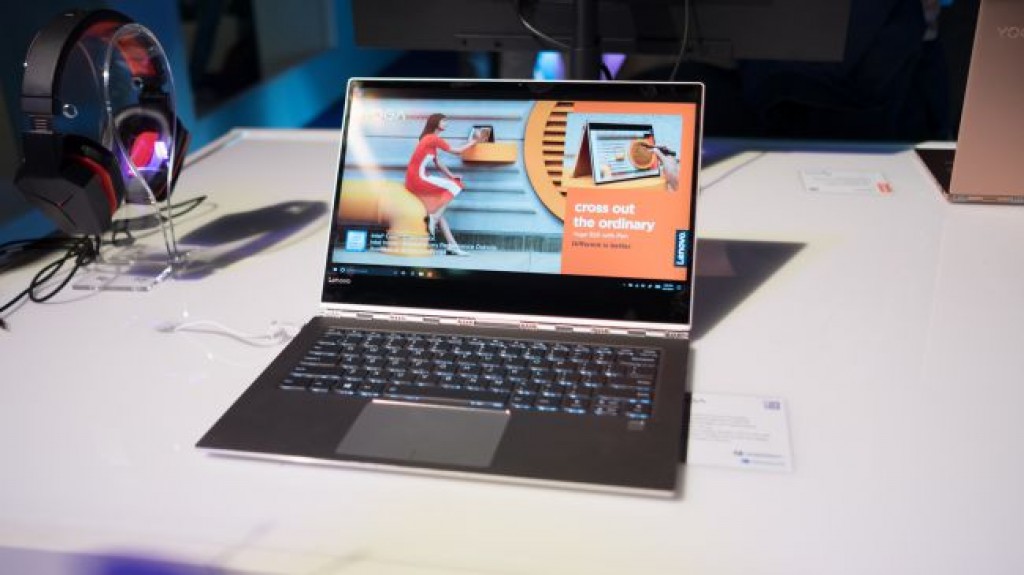
Final verdict
The Lenovo Yoga 920 is another triumphant 2-in-1 design in a year that’s seen the form factor go from strength to strength. It features a lovely premium design, it’s thin and light, and it performs day-to-day tasks well.
The integrated graphics do mean it’s a little weak when it comes to graphically-intensive tasks like video-editing and gaming, but it’s a price you’ll have to pay for a device this thin.
It also helps to keep the price (relatively) low. This isn’t a budget laptop in any way, but it offers very good value for the price, and it comes in a lot cheaper than some of its high-end competitors.
Overall, we really enjoyed our time with the Yoga 920. If you’re looking for a thin, light and capable laptop that can occasionally transform into a tablet, it’s definitely worth considering.
Source: techradar.com









































